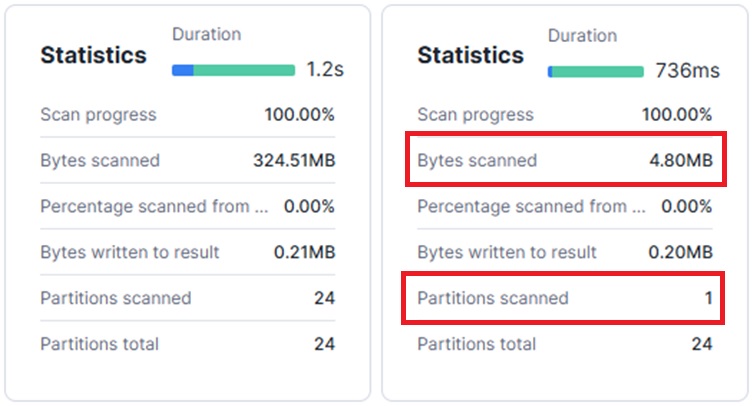🗂️ Clustering and Micro-partitions
This section explains how clustering works in Snowflake, when to use it and how to apply it effectively to improve query performance while managing costs.
Micro-partitions:
- The fundamental unit of storage in Snowflake
- Typically between 50 and 500 megabytes, compressed and stored in a columnar format
- Each micro-partition includes metadata indexing, which helps optimize data scanning
- Micro-partitions are automatically created and managed when data is loaded into tables
Clustering explained:
By default, data is distributed into micro-partitions based on load order. This can lead to misaligned partitions that don’t match common query filters, causing unnecessary partitions to be scanned.
Clustering improves this by organizing data at the metadata level so that queries can skip irrelevant partitions, reducing scan volume and improving performance.
📝 When/how to use clustering:
- Snowflake recommends using clustering only for large tables (multi-terabyte scale)
- Start with 1–2 large tables
- Monitor credit usage before applying widely
- Choose 3–4 clustering keys maximum
- The exact keys and method depend entirely on your query patterns
💡 Example of good keys: Dates, categories, status columns
🚫 Avoid: Unique IDs, free-text fields
🛠️ cluster_by in dbt
🔎 Automatic Clustering:
- Fully serverless → Snowflake manages when and how reclustering happens
- No user control over scheduling or frequency — Reclustering may occur at any time of day
- No upfront cost estimate — Costs depend on data volume, change frequency and can only be monitored after enabling
SNOWFLAKE.ACCOUNT_USAGE.AUTOMATIC_CLUSTERING_HISTORY- Monitor automatic clustering activity
📊 Example
